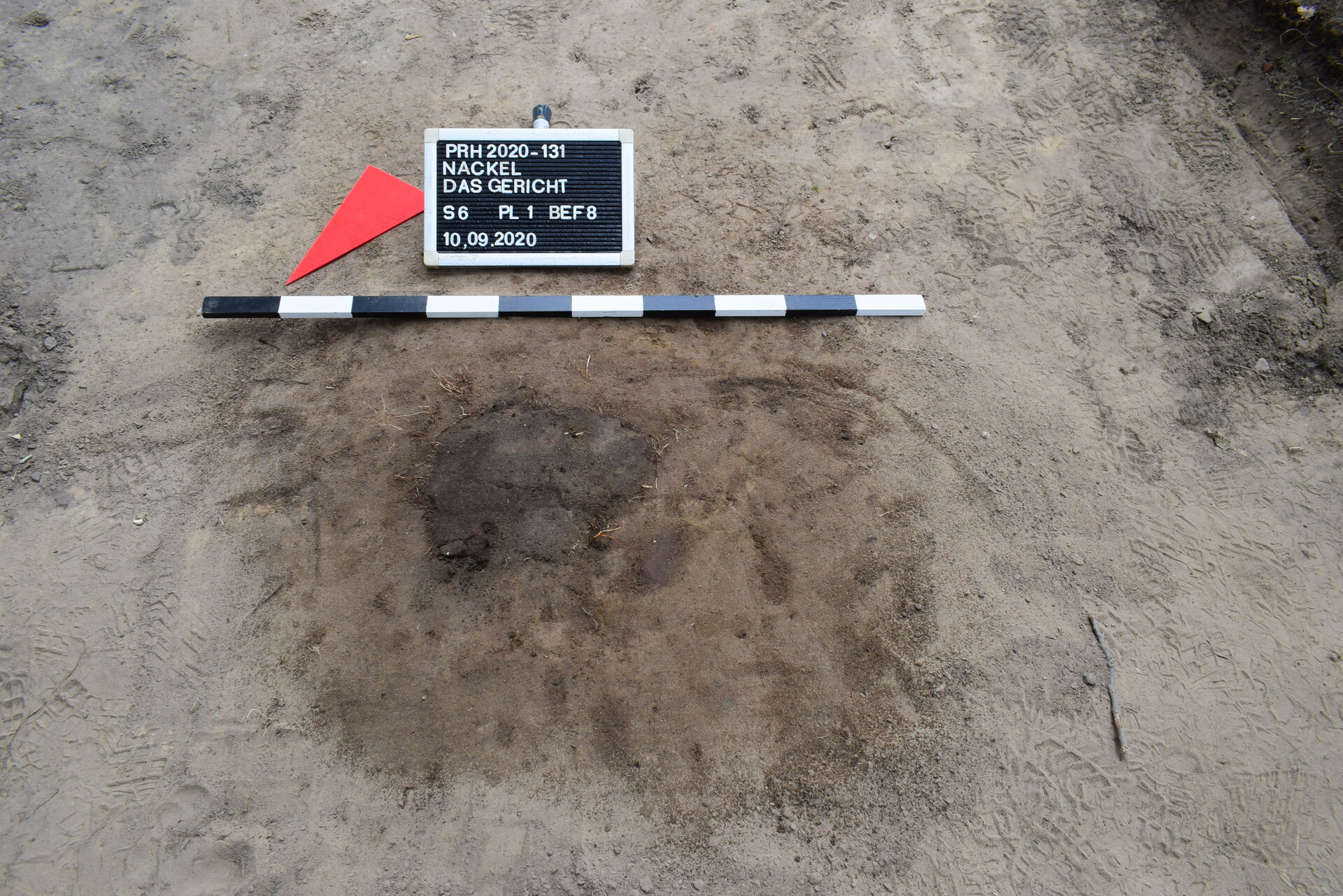The "court" Nackel
The excavation
The archaeological research and teaching excavation at the Nackeler "court" took place from September 7th to 11th, 2020 in cooperation with the Humboldt University of Berlin, led by the archaeologist Dr. Marita Genesis. Five students and one historian used it to examine and document an area of around 140 m² for a week. There were only findings for the area directly at the intersection, i.e. near the original course of the street, as can still be seen from the trees along the avenue.
The excavation was supported by funds from the cultural promotion of the district of Ostprignitz-Ruppin and the municipality of Wusterhausen/Dosse.
Two pits and a stake
As a result of the excavation, two pits and a post hole were found. One of the possible interpretations of the findings is presented here. Both pits were empty. This could be due to the fact that no traces of the two bodies remained due to natural decomposition or that the graves were reburied after a relatively short time. according to dr Marita Genesis, there is evidence elsewhere for such a pious approach, which was even legitimized by a royal edict from 1747 onwards.
The larger of the two pits could have been the grave of the suicide woman, the smaller that of the child murderess. Since their corpses must have been displayed on the wheel for a long time as a deterrent, only a decomposed residue would have been left of their mortal remains, for example due to animal feed and weather. The small pit was enough for that.
The hole is large enough for a pole on which a wheel is placed, for eg a signpost the circumference of the pole would be quite large.

Detail of the excavation at the "court" - The post of the wheel on which the decapitated one was braided could have stood here. Photo: dr Marita Genesis
facts
In 2020, the truthfulness of the legend could be verified by an excavation. The site archaeologist Dr. Marita Genesis and her students examined the area. Copies of the death sentence and the report (a kind of interrogation record) were also found.
Although the area had changed a lot due to agricultural use and traffic, the remains of two pits and a post hole could be found. The location on the former course of the army road could be interpreted in such a way that a wheel was actually set up on a mighty post here. The body of child murderer Dorothee Mücke would have decomposed on the wheel for a while as a deterrent, so that there was only a little left to bury in the smaller of the pits. The larger one could have been the grave of the suicide Magret Sophie Wagner. Skeletal parts were not found. There are two suppositions: Either the traces have been destroyed over time or the Nackelers have already moved the two bodies to the village cemetery. Something like this has been documented for other places, so why shouldn't the Nackelers have been just as humane in 1740?
Additional information
excavation report (to follow)
